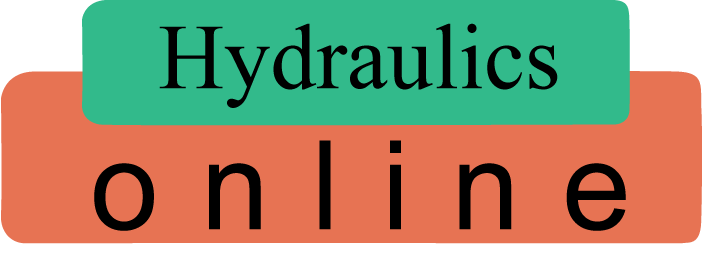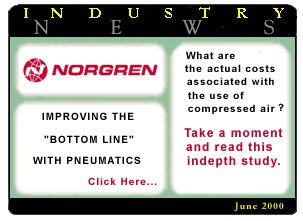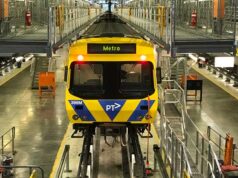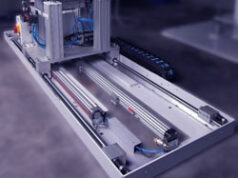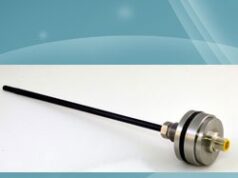Clayton W. Fryer, IMI NORGREN, Littleton, Colorado
Abstract:
The cost of compressed air continues to be a very elusive subject in industrial applications. The notion that compressed air is free is a common misconception. Countless attempts at making end users aware of the costs to produce compressed air have largely been ignored. It seems that Operations Managers are concerned with the power consumption of a couple of sixty-watt light bulbs, but couldn’t care less about the power required to run a 400 horsepower compressor! Let’s put this into perspective, one horsepower equals 745.7 Watts. You can light 4,971 sixty-watt light bulbs with the same power it takes to run a 400 horsepower compressor! Indeed, the single largest electrical appliance in a manufacturing plant may be the compressor motor.
This paper will provide some common sense approaches to determine the cost of compressed air required in a typical pneumatic circuit. It is the discovery of the approach and the requisite considerations that we hope to explore. By clearing up several popular pneumatic myths, we will be able to make better decisions to reduce the cost of compressed air. Compressed air costs are typically hidden in the operating overheads of most companies. Any overhead cost reduction immediately falls to the bottom line in the form of profit. The real test of this improved bottom line is determining the additional sales a company must generate to produce a similar profit.
Real Costs
Experts in the compressed air field suggest the cost to produce compressed air varies from $.15 to $.40 per 1000 Standard Cubic Feet (SCF) (1), (2), depending on geographical location. In spite of these estimates, a large sector of the user public fails to complete the simple calculations to determine what a machine will require in terms of Standard Cubic Feet per Minute (SCFM) of compressed air, let alone for an entire year or the life of the equipment. In order to improve the bottom line with pneumatics, we must also expose three popular pneumatic myths!
Myth #1: Compressed Air is Free
Myth #2: Pipe Size = Right Size
Myth #3: If a little bit’s good, a whole lot’s better
Myth #1: Compressed Air is Free!
In the past most people wouldn’t take the time to determine the cost of the compressed air required by an actuator for a year. It is ironic that hydraulic system designers have to do the calculations in order to determine the size of the power unit required to operate hydraulic cylinders. For far too long, little effort has been made to recognize the similarities between hydraulic and pneumatic systems. Typically, fluid power people have defended the differences between hydraulic and pneumatic systems. By recognizing the similarities, we can design and service the two mediums from similar perspectives, including the need for safety, conservation, component sizing, and cost justification.
There is a developing interest in determining the cost of compressed air in a pneumatic system. We are beginning to see users specify 60 PSIG as the maximum pressure range for a pneumatic system. Pneumatic component manufacturers are somewhat paranoid about discussing the cost of compressed air in fear they might encourage customers to apply a substitute for compressed air. Since compressed air is readily available, affordable, clean, and has less force hazards than hydraulic power, it seems reasonable that compressed air will continue to be applied in the industrial sector.
Real Common Sense
To properly apply pneumatic components in a system, the first component to be considered is the actuator. We have seen a large number of cylinders grossly oversized resulting in poor actuator performance, wasted compressed air, and high initial component costs. Oversizing an actuator by one bore size can result in a fifty percent increase in the cost of compressed air required for the application. If the cylinder is sized to move more than twice the load at the design pressure, the cylinder speed will be adversely affected, and the cost of compressed air will also increase. Using this simple observation can result in significant savings
If care is taken at this step of the design process, every component upstream of the actuator (valves, conductors, fittings, filters, regulators, and lubricators) will have a better chance of being correctly sized and applied. A good and correct start in the process is essential to having an efficient operating system.
Real Calculations
A Cylinder Flow Calculation is required for a number of reasons. It takes into consideration the force required to move the load at the specified pressure, the extend and retract stroke volumes of the cylinder, the cycles per minute, the operating air pressure, and a conversion to Standard Cubic Feet per Minute (SCFM). SCFM is the value used by most pneumatic fluid power manufacturers to apply the correct components in a system. SCFM is also linked to valve sizing using Coefficient of Flow (Cv)
Once the cylinder flow calculation is completed, the designer can determine the correct tubing, fittings, valves, and the Filter, Regulator, and Lubricator (FRL) for the application. In spite of the obvious benefits this information provides, we find few designers attempting these critical calculations.
In a typical circuit (Figure 1.) comprised of a double-acting pneumatic cylinder, a five-port, four-way valve, and two flow controls, the typical approach to sizing exposes another popular pneumatic myth.
Myth #2: “Pipe size = Right Size”.
Figure 1. Typical valve/cylinder/flow control circuit
If the cylinder selected had a ½” pipe port, most installers would apply ½” flow controls, ½” pipe and fittings, a ½” valve, and quite possibly, a ½” FRL! This approach leads to oversized, high priced components and higher long term operating compressed air costs over the life of the equipment. As a result, oversizing components occurs frequently and quickly leads to another popular pneumatic myth.
Myth #3: If a little bit’s good, a whole lot’s better!
Real Life Example?
Let’s consider the following example. We have a cylinder load that requires 500 pounds of force to move in the extend direction only. The retract stroke has no effective load. We want to move the load twelve inches and be able to do this at 30 cycles per minute, eight hours per day, five days per week, 50 weeks per year. The cylinder will be operated on a horizontal plane. Compressed air pressure is 80 PSIG. Of course, we want this cylinder to move as fast as possible (AFAP)!
Specifications:
Load: 500 pounds
Operating Pressure: 80 PSIG
Stroke Length: 12 inches
Cycle Rate: 30 cycles per minute (CPM)
Time to Extend: 1 second
Time to retract: 1 second
Cylinder Velocity: AFAP
Real Solution?
There are five steps required to accurately calculate a cylinder flow rate (in SCFM). The calculations are necessary to achieve accurate results. After the calculations are completed the system designer has the information needed to make sound, cost effective decisions that include downsizing components and conserving compressed air. (Calculations rounded to two decimal places.)
Step #1: Size the Cylinder for Max Performance
This is the stage in sizing a cylinder where we find many designers throwing in a little extra safety factor to cover breakaway forces of a cylinder! (If a little bit’s good, a whole lot’s better!)
Based on common practice and the orientation of the cylinder, we have found the range of the force multiplier to be between 1.25 to 2.00 times the load (3) being moved, at the specified pressure. This range of values will provide adequate force compensation in the calculations and need not be exceeded.
To size the cylinder for maximum performance (quickest stroke time) we will apply the X2 rule. Multiply the load by two and apply the correct cylinder at the specified pressure. In this case, 500 pounds X 2 = 1,000 pounds. Using the Formula, Force is equal to Pressure times Area (F=PA) we solve for the cross-sectional area we need for the cylinder bore. Written another way to solve for the Area, the formula looks like A=F/P. 1000¸ 80=12.50 in.². 12.50 in.² is the cross-sectional area of the bore needed to move our 500 pound load as fast as possible! This is very close to a standard NFPA bore of 4″(12.57 in.²). It is IMPORTANT to note here that any larger bore size will move slower at 80 PSIG, and any smaller bore size will also move slower. Use a 4″ bore cylinder.
Step #2: Calculate total volume per cycle
Total volume per cycle requires some examination of the cylinder we will be applying. We need to recognize that the extend stroke volume will be more than the retract stroke volume on a typical double acting, single-rod, cylinder, due to the volume displacement of the rod.
Since we’ve selected an NFPA 4″ bore cylinder we will apply the standard 1″ rod after we’ve checked to avoid cylinder rod buckling! Extend Volume is equal to the bore cross-sectional area times the stroke length. 12.57 in.² X 12 in. = 150.84 in.³
Retract Volume (compensating for the rod) calculation is (12.57 in.² – .79 in.²) X 12 in. = 141.36 in.³ Total volume per cycle is:
150.84 in.³ + 141.36 in.³ = 292.20 in.³
For a 5″ bore the total volume per cycle is:
235.68 in.³ + 226.20 in.³ = 461.88 in.³ or a 58% increase in the volume of the 4″ bore cylinder!
Step #3: Calculate total volume per minute
Multiply the total volume per cycle by the number of cycles per minute. 292.20 in.³/cycle X 30 CPM = 8,766 in.³ per minute (CIM)
Step #4: Convert CIM to Cubic Feet/Minute (CFM). (NOTE: this calculation step is often overlooked ) 8,766 in.³ ÷ 1728 in.³ = 5.07 CFM
Step #5: Convert CFM to SCFM
This conversion reduces the cylinder flow calculation to the necessary and required terms.
To make this conversion we must recognize the compression ratio of the compressed air being used in the application. Compression ratio is the working pressure expressed in absolute terms and converts compressed air to standard conditions. (14.7 PSIA, 36% Relative Humidity, and 68º Fahrenheit temperature). In most industrial applications, the ambient temperature and relative humidity can be ignored since these variables have little impact on the calculations.
Our Compression Ratio (CR) calculation:
(80 + 14.7) ÷ 14.7 = 6.44
Multiplying the CFM by the CR = SCFM,
5.07 CFM X 6.44 CR = 32.65 SCFM!
32.65 SCFM for this application seems fairly harmless until you complete the compressed air cost evaluation.
The cylinder flow calculation provides the necessary information (SCFM) to more accurately determine the correct valve (Cv) and the proper FRL for the system. Without the cylinder flow calculation, sizing the rest of the components in the system will be accomplished empirically, (trial and error approach), or by using Myth #2.
With the cylinder flow calculation complete, we can move on to the real cost of compressed air for the application and sizing the rest of the components in the system.
Real Horsepower (HP) Requirements
Most compressor representatives will use a few rules of thumb to determine the compressor capacity required for an application. Depending on the type of compressor used, compressors are typically rated to deliver four to five SCFM per horsepower (rule of thumb). Most compressor representatives will strongly recommend a duty cycle of 50% to 75% (rule of thumb), again depending on the type of compressor. Duty Cycle is the percentage of time the compressor motor is generally running under loaded conditions. In our application, at 50% duty cycle, and at 4 SCFM/ HP, a 32.65 SCFM application will require an additional compressor capacity of 16.32 HP! (32.65 SCFM÷4 SCFM/HP)÷50% Duty Cycle = 16.32 HP
Real Compressed Air Costs!
If we carry our SCFM calculations out to the number of SCF per year, per shift, pretty soon we are talking about some serious compressed air usage! Consider how many minutes there are in an eight-hour day, five days a week, fifty weeks in a year? (60 minutes/hour X 8 hours/day X 5 days/week X 50 weeks/year) =
120,000 minutes/year per eight hour shift! (That’s 360,000 minutes/year for three shifts!)
32.65 SCFM X 120,000 Minutes = 3,918,000 SCF/Year!
The 5″ bore cylinder would require 51.6 SCFM, or 6,196,890 SCF/Year!
If your average cost per 1,000 SCF is only $.25, the cost of compressed air to operate this one 4″ bore cylinder for one shift, for the year is an incredible, $979.50! [(3,918,000÷ 1,000) X .25]
Obviously, if your cost of compressed air is $.50/1,000 SCF, your annual cost would be $1,959.00!
For the 5″ bore, air consumption costs jump to $1,549.22 (at $.25/1,000 SCF) and $3,098.45 (at $.50/1,000 SCF). Over a 50% increase for one bore size increase!
Real Concern
The cost of compressed air actually used is a major concern for most manufacturing companies. If we could reduce the compressed air consumption in our system by 30%, most Chief Executive Officers, Chief Financial Officers, and plant engineers would leap at the opportunity! Let’s consider another approach to our application.
Since our 500 pound load is only being moved in the extend direction, we could consider lowering the air pressure to return the cylinder. For example, say we were able to lower the return pressure from 80 PSIG to 20 PSIG. How would that impact on the total system air consumption?
If you recall from Step #2 above, the retract stroke volume was 141.36 in.³ per cycle, or about 48.4% of the total cycle volume. Without taking you through the additional math, the compressed air cost for the extend stroke at $.25/1000SCF is (51.6% of $979.50) $505.42/year.
By changing the pressure on the return stroke to 20 PSIG the compressed air consumption is reduced from 15.8 SCFM to 5.8 SCFM. The impact on the compressed air bill for the retract stroke is a reduction from $474.08/year to $174.03, a reduction of $300.00 or 30%.
Even if the price of a ½” regulator was $50 you would be able to expect a payback on the cost of the regulator in about two months. That is, IF we use Myth #2: Pipe Size = Right Size, or Myth #3: If a little bit’s good, a whole lot’s better!
Please keep in mind this example is for only one 4″ cylinder. How many cylinders are you applying? What is your cost of compressed air?
When we examine the application even closer, we are able to save even more in initial costs by properly sizing the valve, the fittings, and tubing by the use of Coefficient of Flow (Cv). It is sufficient to say the use of Cv’s to size a system is reasonably accurate and provides an element of cushion in most system calculations.
There are other approaches to conserving compressed air in typical applications. If cylinder speed is not important, using a force multiplier between 1.25 and 2.0 times the load will result in smaller cylinders and less air consumption. Applying single-acting cylinders could significantly reduce the long-term cost of compressed air
Real System Cv?
Using Cv’s we can evaluate the typical circuit (Figure 1.) for potential bottlenecks! Each component in the circuit has a Cv. With some effort it is possible to determine the Cv of the cylinder port, Cv of the flow control (in both the free flow direction as well as the WIDE OPEN controlled flow direction), Cv of the piping/tubing and fittings, and the Cv of the directional control valve. The System Cv is ALWAYS going to be less than the component with the smallest Cv in the system! A strong recommendation here is to make the most restrictive component (“the weakest link”!) (4) in the system, the most expensive component (usually the directional control valve). This will minimize the initial cost of the components in the system. It is fair to say that a ½” directional valve will cost more than a ¼” valve. The difference in pipe or tubing cost is marginally different.
Real Serious Savings?
With dual pressure savings, you can see the fast payback on applying additional regulators. More impressive savings can be realized by finding the leaks in the compressed air system, and eliminating them! We have seen reports suggesting compressed air losses due to system leaks and artificial demand range from 20% to 45%! (5) (Perhaps the high loss due to leaks is why compressor representatives suggest the 50-75% duty cycle for compressors?) Compressed air leaks, left unattended, will continue to grow in size and flow due to the abrasive effect of the air-line contamination and particulate matter continuing to attack the leak orifice. (6) The sooner leaks are discovered and repaired, the less waste there is in power required to produce the compressed air. Less wasted air reduces operating costs, and can justify the expense of a maintenance patrol to quickly repair air leaks.
As you can see in Figure 2., even small diameter leaks can be very expensive.
| |
| |
| | | |
| | | |
| | | |
| | | |
| | | |
| | | |
Figure 2. Flow & Cost of Leaks per Orifice Size
The values in Figure 2, are based on twenty-four hours per day, seven days per week, fifty weeks (8400 hours).
The values in Figure 2, are based on twenty-four hours per day, seven days per week, fifty weeks (8400 hours).
Real Maintenance
After all of this discussion to reduce the operating costs associated with wasting compressed air we must mention another, less obvious, source of waste. Users should regularly check for excess pressure drop across air filters. By applying pressure drop indicators, (also called service life indicators, or delta P indicators) and changing filter elements with greater frequency, you will avoid the escalating cost of the pressure drop across the filter element. Electronic and mechanical pressure drop indicators are commercially available to provide reminders to service the filter elements on a regular basis. Using pressure switches to monitor regulated pressure in the system will avoid surpassing the X2 multiplier, ensure efficient use of compressed air, and provide optimum performance of the system.
In hydraulic systems, a pressure drop across a filter has serious consequences effecting the entire hydraulic power unit adversely. Poor maintenance on hydraulic filters results in catastrophic failures. In hydraulic systems, leaks are quickly repaired due to the obvious hazards and cost associated with hydraulic oil.
Rarely does poor maintenance on a pneumatic filter result in catastrophic failure. However, excessive pressure drop across a pneumatic filter is an ongoing operating cost that is hidden from view. In pneumatic systems, leaks are often ignored until they become so annoying (uncomfortably loud), or they have caused such a significant system pressure drop, that they MUST be repaired!
Summary
If you don’t care about the cost of compressed air in your plant, don’t do the calculations, and you will perpetuate the three pneumatic myths! Consider the similarities between pneumatic and hydraulic systems, rather then the differences.
If increased profits are of interest to you, than you’ll find a hidden profit center in the cost-effective use of compressed air. If you reduce your compressed air overhead costs, avoid over -sizing components, and design your systems to operate at an optimum pressure, you can improve system performance, and you will improve the bottom line. The first step to recognizing the potential savings available to you is completing these simple calculations.
With a little time and effort you can make a big improvement on your bottom line with pneumatics.
References
“Compressed Air Handbook “, Electric Power Research Institute, Palo Alto, CA. 1994, pp12.
Wagner, H.H., “Your Total Compressor Cost May Be Too High” Plant Engineering, May 1, 1999.
Fleischer, H., “Stop Oversizing Pneumatic Components” Machine Design, June 3, 1999, pp 101-106.
Fleischer, H., “Manual of Pneumatic Systems Optimization” Chapter 2. Conductance (Cv), 1st ed., McGraw-Hill, New York, 1995, pp 25-66
Foss, R.S. “Improving Air System Efficiency” Part 1, Hydraulics & Pneumatics, April 1998, pp 41-68
Foss, R.S. “Improving Air System Efficiency” Part 7, Hydraulics & Pneumatics, July 1999, pp 33-79
Acknowledgements
A special thanks to my Norgren colleagues, Jim Dietvorst, Brad Dittmer, Doug Kelly, Jerry Martin, and Joseph Quinn, for their patience, support and technical expertise. Cf.
